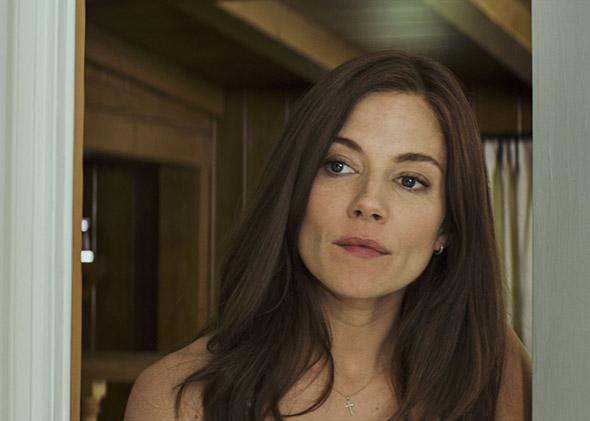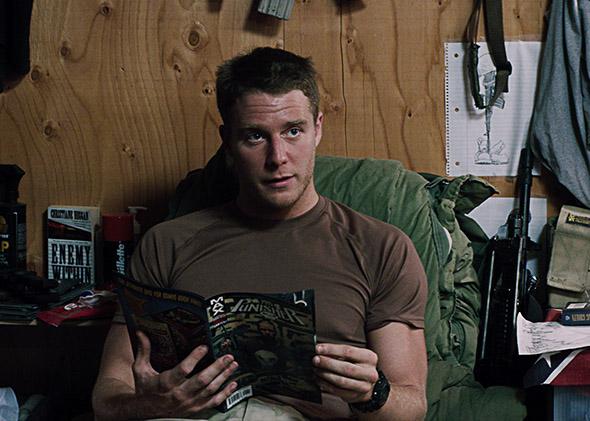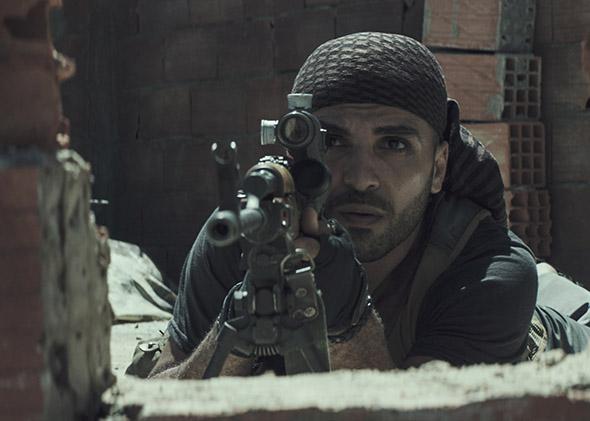On Feb. 2, 2013, former Navy SEAL Chris Kyle was killed at a shooting range near Chalk Mountain, Texas, while attempting to help fellow veteran Eddie Ray Routh. He had gained notoriety during the Iraq war—with 160 confirmed kills out of a possible 255, Kyle remains the deadliest sniper in U.S. military history. Almost two years later, actor-director Clint Eastwood has transformed the 2012 memoir American Sniper from a best-seller into a box-office hit.
Controversy over Kyle’s credibility casts doubts on the film, however—claims that he engaged in a bar fight with former Minnesota governor and pro wrestler Jesse Ventura, sniped looters in New Orleans after Hurricane Katrina, and killed two carjackers all remain unsubstantiated. (The first was the subject of a $1.845 million defamation lawsuit Ventura brought and won against Kyle.) This, coupled with a New Yorker piece exploring Kyle’s tendency for embellishment, may make audiences ask: Does Eastwood’s American Sniper stick to the narrative as presented by Chris Kyle or to the known facts—or does it blend the two?
The answer is not an easy one. More than any other strategy, omission keeps the film true to life. Questionable episodes (including those mentioned above) are excised. Eastwood de-emphasizes training and non-Iraq sequences to grant breathing room to a handful of military operations, building a film around Kyle’s tense decisions to pull the trigger or grant mercy. What emerges is a morality tale—one that, unlike the memoir, reflects on what simmers beneath the surface. Below, I probe the film’s key moments for inaccuracies.
Texas Cowboy

Courtesy of Warner Bros. Pictures
American Sniper’s Chris Kyle (Bradley Cooper) is an all-American boy raised in rural Texas with strong Christian values and a passion for firearms. His father imparts strict lessons about the difference between sheep, sheepdogs, and wolves—and the importance of finishing a fight. And indeed, in his memoir, Kyle credits paternal influence for his black-and-white morality.
But skipping ahead, the film takes some liberties. Early on, the movie shows Kyle taking part in a rodeo before finding his girlfriend in bed with another man, whom he quickly dispatches. While Chris Kyle participated in “saddle bronco bustin’ ” from high school into college, his rodeo career ended when a bronco flipped and left him with pins in his wrists, broken ribs, and other injuries. Neither his brother nor an unfaithful girlfriend are mentioned in the book, but he did become a ranch hand to pay the bills after partying with rodeo groupies drained his income. During this time, he approached the recruitment office to enlist—not, as the movie suggests, because he witnessed American lives lost on the news, but because he had always intended to join the military following school.
When his rodeo injuries precluded enlistment, Kyle quit school to work on ranches full time. However, he soon got a call from Navy recruiters who reversed their earlier decision. In the movie, this waffling is glossed over to make his enlistment seem like a streamlined response to injustice—Kyle goes straight from busting broncos to SEAL training.
Family Matters

Courtesy of Warner Bros. Pictures
In memoir and movie, Chris Kyle and Taya (Sienna Miller) begin their relationship not long after his SEAL training, and Eastwood’s film is painstakingly accurate to their real-life meet-cute—drunken vomiting and dodged calls included. But the Kyles’ wedding was not interrupted, as in the film, by whispered revelations that America would go to war following 9/11. Instead, the couple decided to marry because Kyle would soon be deployed and had only a few days of leave amidst military training. His brother, too, deployed not longer after.
Taya’s experiences during his tours were just as painful, if not more so, according to the book as in the movie. (Kyle once dropped his phone during a firefight and she was forced to hear the whole thing—but not when she was revealing the sex of her baby, as in the film.) Yes, husband and wife did fight many times over whether he should redeploy (and in italicized passages, the memoir allows Taya to vent her frustrations). And yet, while in the film Kyle decides after killing Mustafa that he is too depressed to continue fighting, according to his memoir he told Taya he wouldn’t re-enlist because their marriage was nearing divorce.
At the end of the film, Taya speaks with Kyle the day he travels to the shooting range with Routh, letting him know how grateful she is that he’s returned. This is not in Kyle’s memoir, for obvious reasons, but screenwriter Jason Hall writes in an addendum to the new edition of the book that Taya told him she had this conversation with Kyle a month before his death.
In the Field
Film and memoir begin with near-identical opening sequences: Kyle sees a woman and a few children on the otherwise-empty street of an Iraqi town through his sniper scope. In the movie, Kyle sees this woman remove a grenade from beneath her dress and hand it to her child. He shoots the child, and when the woman wails and picks up the grenade shoots her as well. He visually shows guilt, blinking, sniffling, and refusing the congratulations of his fellow sailor.*
However, according to the memoir, Kyle shot only a woman that day, not a child, and he felt no guilt about it: “It was my duty to shoot, and I don’t regret it.” It was his first kill with a sniper rifle, though he had not yet completed his sniper training. In his writing, Kyle calls the woman “evil” and reveals that many people, including himself, referred to Iraqis as “savages.”
Another anecdote in the movie is completely invented. Kyle and his fellow sailors enter a civilian house and take up station there. Though the family inside is obviously startled, they welcome the men to have dinner with them. However, when Kyle inspects the house more carefully, he finds weapons hidden beneath the floorboards, and outs the family as pro-insurgency, beginning a firefight.* No such incident happens in the memoir.
Fallen Friends

Courtesy of Warner Bros. Pictures
Kyle’s friendships with his fellow sailors shifted with each deployment, but two names recur in both movie and text: Ryan Job and Marc Lee. Neither portrayal, as it turns out, is accurate on screen.
In the movie, Ryan Job (or “Biggles,” played by Jake McDorman) is shot in the head and blinded by Syrian sniper Mustafa but survives long enough to propose to his girlfriend. He dies soon after, and that death defines Kyle’s fourth tour in Iraq and spurs him to seek revenge against Mustafa. In reality, according to Kyle’s memoir, the Navy discharged Biggles from service following his injury. The ex-SEAL attended college, began a career, and got married before dying following facial reconstruction surgery while his wife was pregnant with their first child.*
Moviegoers will remember Marc Lee (Luke Grimes) as the man who became disillusioned with combat and argued with Kyle shortly before his death in the field. Kyle believes this lack of faith in the war caused his death; Taya disagrees and they debate that point, focusing on a letter Lee wrote his mother, at the memorial service. Though most of the movie’s inaccuracies make Kyle seem more sympathetic, in this case his memoir displays more compassion. In the book, Kyle praises the letter and says he attended a memorial service at base and then paid graveside respects to Lee at the funeral of another SEAL.
Mustafa and “The Butcher”

Courtesy of Warner Bros. Pictures
In the movie, a character named Mustafa (Sammy Sheik) becomes Kyle’s foil and nemesis: a Syrian Olympian “hitting head shots from 500 yards out” who appears from nowhere to down American troops. Unlike Kyle, Mustafa is given no backstory, family, or surname and remains more or less anonymous—we see his face but only in combat. In a climactic moment toward the end of the film, Chris Kyle finally shoots the sniper, who in an earlier scene had killed his friend Ryan Job (or “Biggles”). This is also Kyle’s legendary longest shot: 2,100 yards or a little over a mile.
In truth, these three milestones—defeating his sniper adversary, avenging Biggles, and achieving his longest successful shot—did not align in one moment. Mustafa existed but only merits this brief mention in Kyle’s memoir:
While we were on the berm watching the city, we were also watching warily for an Iraqi sniper known as Mustafa. From the reports we heard, Mustafa was an Olympics marksman who was using his skills against Americans and Iraqi police and soldiers. Several videos had been made and posted, boasting of his ability.
I never saw him, but other snipers later killed an Iraqi sniper we think was him.
As for his longest confirmed kill, Kyle targeted a roof-bound enemy insurgent aiming a rocket launcher at American troops outside Sadr City. And the shot did not, once made, alert Iraqi insurgents to their position and create a dramatic firestorm that disillusioned Kyle, as in the movie. (Elsewhere in his memoir he writes: “I loved what I did, I still do … I’m not lying or exaggerating to say it was fun.”)
As with Mustafa, the film exaggerates Kyle’s legendary status among his enemies. No $180,000 bounty was placed on his head or posters circulated bearing illustrations of his tattoos, as in the film—instead, $20,000 to $80,000 was the reward for killing any American sniper.
The other so-called villain in the movie is “The Butcher” (Mido Hamada), a Jordanian militant whom Kyle and his fellow sailors spend considerable time seeking out. In one scene, they clear houses searching for intel and find a family who refuses to speak out of fear of violent retribution. However, they give the sailors his name, and later we see The Butcher brutally kill this man and his child as Americans attempt to save them. This horrible anecdote is absent from Kyle’s memoir, and “The Butcher” is not mentioned at all, though some suggest his origins lie in real-life Shia warlord Abu Deraa. “The Butcher” and Mustafa’s roles seem exaggerated primarily to heighten Chris Kyle’s sense of purpose in combat: Every kill becomes justified when the murdered possess supernatural evil.
Correction, Jan. 26, 2015: This post originally misidentified Chris Kyle and his fellow SEALs as “soldiers.” As members of the Navy, SEALs are sailors. It also misstated that, in the movie, Kyle and his colleagues find WMDs under the floorboards of a family’s house. The SEALS find conventional weapons under the floorboards, not weapons of mass destruction. Finally, this post misstated that Ryan Job died on the operating table; Job actually died two days following surgery.
